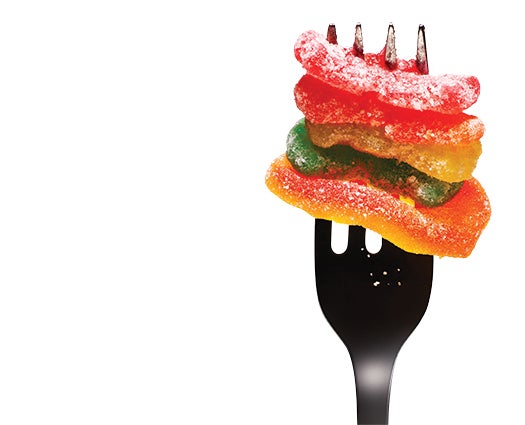7 Factors That Change Your Sense Of Taste
Take a bite out of that

The tongue recognizes five basic tastes: sweet, salty, sour, bitter, and umami—a savory aspect associated with meat and mushrooms. But the taste you actually experience isn’t that simple. In recent years, a growing number of studies have shown that taste can be influenced by a host of surprising factors.
1. Language
People praise food with a descriptive name more than the same food with a lackluster name. For example: “Succulent Italian Seafood Filet” versus “Seafood Filet.”
2. Utensils
Spoons made from copper or zinc enhance a food’s apparent saltiness. Researchers suggest further study into how this could help people eat less salt.
3. Temperature
Warm beer tastes more bitter, cold ham tastes saltier, and bacon beer? Tastes horrible*.
4. Color
Forty-eight percent of participants thought soda in a blue glass was more thirst-quenching than in other colors, likely because they associated blue with cold.
5. Environment
People were asked to describe the qualities of the same Scotch whisky in three rooms themed as grassy, sweet, or woody. (For example, the first room smelled of grass and played recordings of bleating sheep.) They largely responded with “grassy,” “sweet,” or “woody,” respectively.
6. Expectations
After sampling, French sommeliers liked wine poured from a high-priced bottle over the same wine poured from a cheap one.
7. Memory
Recalling a positive memory about eating vegetables will make a present experience with them more enjoyable (and you’ll take a bigger portion too).
*According to senior editor Martha Harbison
This article originally appeared in the March 2014 issue of Popular Science.